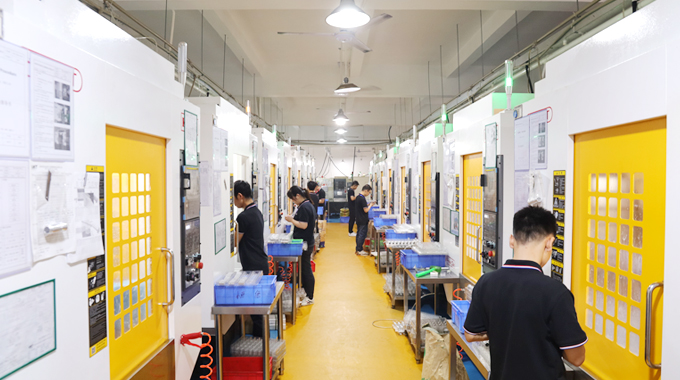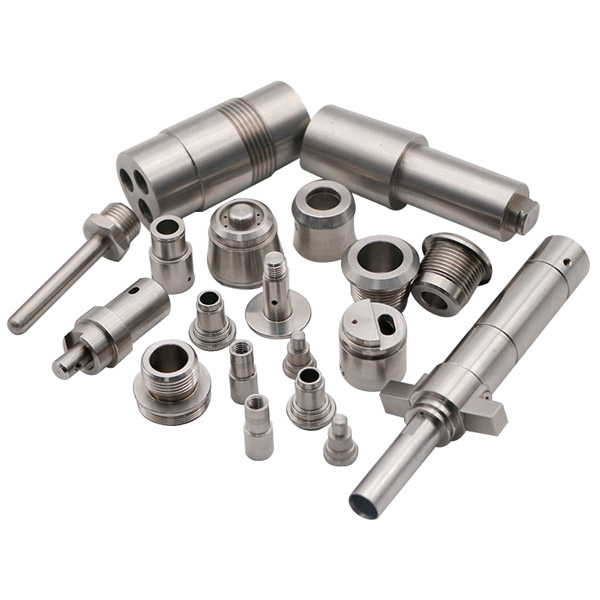15 years one-stop China custom CNC machining parts factory

Hey there I’m VMT Sam!
With 25 years of CNC machining experience we are committed to helping clients overcome 10000 complex part-processing challenges all to contribute to a better life through intelligent manufacturing. Contact us now
 193 |
Published by VMT at Jun 15 2024
193 |
Published by VMT at Jun 15 2024
In the field of CNC machining parts manufacturing, stainless steel is highly favored for its excellent corrosion resistance and attractive appearance. However, questions about whether stainless steel will rust have always existed. This article will delve into the rusting of stainless steel from various perspectives and answer some common questions, aiming to provide readers with comprehensive and accurate information.

The corrosion resistance of stainless steel is not immutable. Its rusting time depends on various factors such as the chemical composition of the steel, intergranular structure, operating conditions, and environmental media. Generally, stainless steel can maintain long-term corrosion resistance in normal environments. However, if the operating conditions are harsh, such as prolonged exposure to damp, acidic, or salty environments, the rusting time of stainless steel will be greatly shortened. Therefore, a specific time frame for stainless steel rusting cannot be provided and needs to be evaluated based on actual conditions.

Firstly, it's important to clarify that there is no strictly defined "100% stainless steel." The corrosion resistance of stainless steel is achieved through the formation of a chromium-rich oxide film (protective film) on its surface, which can prevent the penetration of oxygen atoms and oxidation, thereby obtaining corrosion resistance. However, if this thin film is damaged, such as by mechanical damage, chemical corrosion, or electrochemical corrosion, stainless steel may rust. Therefore, even high-quality stainless steel may rust under specific conditions.
Stainless steel itself does not rust in water. However, if there are chlorides, salts, or other substances present in the water, stainless steel may rust when immersed in a humid environment for a long time. This is because chlorides and salts can destroy the chromium-rich oxide film on the surface of stainless steel, causing iron atoms in the metal to precipitate and combine with oxygen to form iron oxide, leading to rusting. Therefore, when using stainless steel products, it is advisable to avoid prolonged immersion in water containing chlorides or salts.
Stainless steel does not rust completely, but its corrosion resistance is relatively strong, making it less prone to rusting. In the same environment, stainless steel is more corrosion-resistant and less prone to rust than other types of steel. However, if used or maintained improperly or exposed to extremely harsh environments, stainless steel may still rust.
316 stainless steel is a type of stainless steel containing molybdenum, which has better corrosion resistance, especially in environments containing chloride ions. However, even 316 stainless steel may rust due to reasons including:
Both 304 and 316 stainless steels have their own advantages and disadvantages, suitable for different occasions. 304 stainless steel has good corrosion resistance and relatively low cost, suitable for general indoor environments. On the other hand, 316 stainless steel has better corrosion resistance, especially in environments containing chloride ions, making it suitable for harsh environments such as marine and chemical industries. Therefore, the choice between 304 and 316 stainless steel depends on specific usage environments and requirements.
The speed of stainless steel oxidation depends on various factors such as the material of the stainless steel, surface treatment processes, operating environments, etc. Generally, high-quality stainless steel can maintain long-term corrosion resistance and has a slow oxidation rate in normal environments. However, if the operating environment is harsh or the maintenance is improper, the oxidation rate of stainless steel will accelerate. Therefore, when using stainless steel products, it is important to observe proper usage methods and maintenance measures.
Stainless steel is not completely immune to rusting, and its corrosion resistance is influenced by various factors. In the field of CNC machining parts manufacturing, selecting and using stainless steel materials correctly is of great significance for ensuring product quality and extending service life. This article has provided detailed analysis on the rusting time of stainless steel, misunderstandings about 100% stainless steel, corrosion resistance of stainless steel in water, methods to prevent stainless steel rusting, and other issues. It has also discussed reasons for the rusting of 316 stainless steel, the choice between 304 and 316 stainless steel, and the oxidation rate of stainless steel. Through reading this article, readers can gain a more comprehensive understanding of the characteristics and common issues of stainless steel, providing useful references for the application of stainless steel.

FAQs
Q: What are the advantages of stainless steel CNC machining parts?
A: Stainless steel CNC machining parts have advantages such as excellent corrosion resistance, attractive appearance, high mechanical strength, and ease of cleaning, making them widely used in various fields.
Q: How to choose the right stainless steel material?
A: Choosing the right stainless steel material requires evaluation and selection based on specific usage environments and requirements. Generally, several factors can be considered:
Q: How fast does stainless steel oxidize?
A: The oxidation speed of stainless steel is not a fixed value and is influenced by various factors, including the material of stainless steel, surface conditions, environmental temperature, humidity, exposure to chemical substances, etc. For example, in harsh environments such as high temperature, high humidity, strong acid, strong alkali, etc., the oxidation speed of stainless steel will accelerate. However, in dry, clean, and non-corrosive environments, the oxidation speed of stainless steel is relatively slow.
Therefore, when using stainless steel products, we need to choose the appropriate stainless steel material according to the specific usage environment and requirements and take corresponding protective measures to slow down its oxidation speed.
Q: What are the advantages of stainless steel CNC machining parts?
A: Stainless steel CNC machining parts have advantages such as excellent corrosion resistance, attractive appearance, high mechanical strength, and ease of cleaning. These advantages make stainless steel widely used in variousfields such as medical equipment, food processing, chemical equipment, architectural decoration, etc.
Q: In what situations is stainless steel prone to rust?
A: Stainless steel is prone to rust in the following situations:
To prevent stainless steel from rusting, we need to avoid the above situations during use and maintenance and take corresponding protective measures.
Stainless steel, as a metal material with excellent corrosion resistance, has been widely used in the field of CNC machining parts manufacturing. However, stainless steel is not completely immune to rust, and its corrosion resistance is affected by various factors. When using stainless steel products, it is important to understand its characteristics and common issues and take appropriate measures to maintain its good corrosion resistance.
This article has provided in-depth discussion on the rusting of stainless steel from multiple perspectives and answered some common questions. Hopefully, this article can provide readers with comprehensive and accurate information, helping everyone better understand and use stainless steel products.
Ready To Start Your Next Project?
Get Instant Quote

Request a Free Quote
Send us a message if you have any questions or request a quote. We will get back to you ASAP!